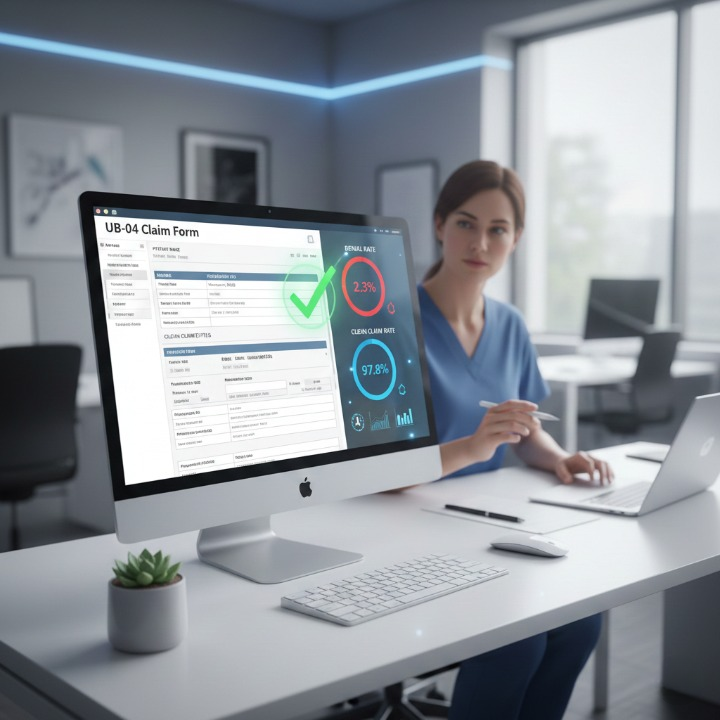Medical billing is a complex and critical component of the healthcare industry, directly impacting the financial health of medical practices and the quality of patient care. A disorganized billing process can lead to significant revenue loss and reduced patient satisfaction. If you find that your medical billing is in disarray, it’s crucial to take immediate action to rectify the situation. In this article, we will explore the common causes of medical billing issues, and the consequences of poor billing practices, and provide actionable solutions to streamline your billing operations for better efficiency and accuracy.
Understanding the Root Causes of Medical Billing Issues
Medical billing problems often stem from a variety of sources. One common issue is the complexity of healthcare regulations and insurance policies, which are frequently updated and can be difficult to interpret and apply correctly. Misunderstanding these regulations can lead to billing errors, claim denials, and delayed payments.
Another significant factor is inadequate training and education of billing staff. Without proper training, staff may not fully understand how to use billing software, interpret insurance policies, or handle claims effectively. This lack of knowledge can result in frequent errors and inefficiencies.
Additionally, outdated or inefficient billing systems can contribute to a chaotic billing process. Many medical practices still rely on manual billing processes or outdated software, which are prone to errors and inefficiencies. This can lead to data entry mistakes, lost claims, and an overall disorganized billing workflow.
Moreover, insufficient communication between healthcare providers, billing staff, and insurance companies can exacerbate billing issues. Poor communication can result in misunderstandings, incomplete documentation, and delayed claims processing.
The Consequences of Poor Medical Billing Practices
Poor medical billing practices can have severe consequences for healthcare providers. Financially, disorganized billing can lead to a significant loss of revenue due to denied claims, delayed payments, and billing errors. This revenue loss can impact the overall financial health of a medical practice, affecting its ability to invest in new technologies, hire additional staff, or expand services.
Furthermore, inefficient billing processes can damage a practice’s reputation and patient relationships. Patients may become frustrated with billing errors, unexpected charges, or delayed billing statements. This frustration can lead to negative reviews, a decrease in patient retention, and a tarnished reputation in the community.
In addition to financial and reputational impacts, poor billing practices can also lead to increased stress and burnout among billing staff. Constantly dealing with billing errors, claim denials and frustrated patients can create a stressful work environment, contributing to high staff turnover and reduced productivity.
Steps to Improve Your Medical Billing Process
Improving your medical billing process requires a comprehensive approach that addresses the root causes of billing issues. The following steps can help you streamline your billing operations and enhance your practice’s financial health and patient satisfaction.
Invest in Staff Training and Education
Investing in regular training and education for your billing staff is crucial for maintaining an efficient billing process. Ensure that your team is well-versed in the latest healthcare regulations, insurance policies, and billing software. Consider offering workshops, online courses, or certifications to keep your staff up-to-date and knowledgeable.
Upgrade Your Billing Software
Transitioning to a modern, automated billing system can significantly improve billing accuracy and efficiency. Look for billing software that integrates seamlessly with your electronic health records (EHR) system, offers real-time claim tracking, and provides user-friendly interfaces. Automated systems can reduce manual data entry errors, streamline claims processing, and enhance overall workflow efficiency.
Enhance Communication and Collaboration
Promote open communication and collaboration between healthcare providers, billing staff, and insurance companies. Regular meetings and clear communication channels can help ensure that everyone is on the same page regarding billing processes and documentation requirements. Encourage a collaborative approach to problem-solving and address any communication barriers that may exist.
Conduct Regular Audits and Reviews
Regular audits and reviews of your billing processes can help identify areas for improvement and prevent future issues. Analyze billing data to identify trends, patterns, and potential problem areas. Use this information to implement corrective actions and optimize your billing workflow.
Implement a Quality Assurance Program
Establishing a quality assurance program can help maintain high standards in your billing operations. Set clear performance metrics and regularly evaluate your billing staff’s performance against these benchmarks. Provide feedback and support to help staff improve their skills and address any deficiencies.
The Role of Outsourcing in Medical Billing
Outsourcing medical billing to a third-party billing service can be an effective solution for practices struggling with billing issues. Billing companies specialize in managing billing processes and have extensive experience and expertise in handling complex claims and insurance policies. By outsourcing, practices can benefit from reduced billing errors, faster claims processing, and increased revenue.
However, outsourcing is not a one-size-fits-all solution. It’s essential to carefully evaluate potential billing partners, considering factors such as their reputation, experience, and cost-effectiveness. Ensure that the billing service aligns with your practice’s values and goals and offers transparency and accountability in their operations.
Monitoring and Continuous Improvement
Once you’ve implemented changes to your billing processes, it’s crucial to monitor their effectiveness and make continuous improvements. Regularly assess key performance indicators (KPIs) such as claim denial rates, days in accounts receivable, and collection rates. Use these metrics to identify areas for further improvement and refine your billing strategies.
Encourage a culture of continuous improvement within your practice, where staff are empowered to suggest and implement changes that enhance billing efficiency. Foster an environment where feedback is valued, and innovation is encouraged.
Conclusion: Take Action to Fix Your Medical Billing Now
Addressing medical billing issues is essential for the financial health of your practice and the satisfaction of your patients. By understanding the root causes of billing problems and implementing effective solutions, you can streamline your billing process, reduce errors, and improve revenue collection. Invest in staff training, upgrade your billing software, enhance communication, and consider outsourcing if necessary. Conduct regular audits and foster a culture of continuous improvement to ensure your billing operations remain efficient and effective.
Don’t let a disorganized billing process hold your practice back. Take action now to fix your medical billing and set your practice on the path to financial success and patient satisfaction.









